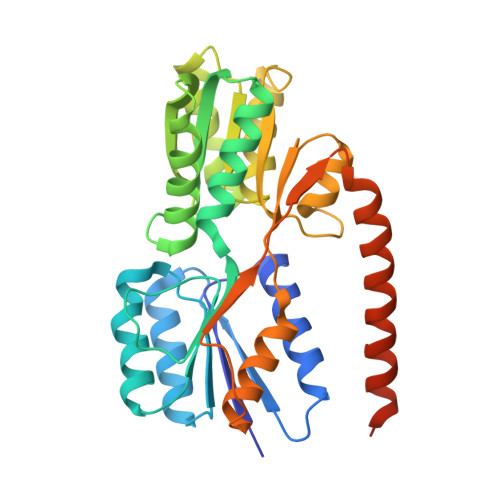Specificity of Polysaccharide Use in Intestinal Bacteroides Species Determines Diet-Induced Microbiota Alterations.
Sonnenburg, E.D., Zheng, H., Joglekar, P., Higginbottom, S.K., Firbank, S.J., Bolam, D.N., Sonnenburg, J.L.(2010) Cell 141: 1241
- PubMed: 20603004
- DOI: https://doi.org/10.1016/j.cell.2010.05.005
- Primary Citation of Related Structures:
2X7X - PubMed Abstract:
The intestinal microbiota impacts many facets of human health and is associated with human diseases. Diet impacts microbiota composition, yet mechanisms that link dietary changes to microbiota alterations remain ill-defined. Here we elucidate the basis of Bacteroides proliferation in response to fructans, a class of fructose-based dietary polysaccharides. Structural and genetic analysis disclosed a fructose-binding, hybrid two-component signaling sensor that controls the fructan utilization locus in Bacteroides thetaiotaomicron. Gene content of this locus differs among Bacteroides species and dictates the specificity and breadth of utilizable fructans. BT1760, an extracellular beta2-6 endo-fructanase, distinguishes B. thetaiotaomicron genetically and functionally, and enables the use of the beta2-6-linked fructan levan. The genetic and functional differences between Bacteroides species are predictive of in vivo competitiveness in the presence of dietary fructans. Gene sequences that distinguish species' metabolic capacity serve as potential biomarkers in microbiomic datasets to enable rational manipulation of the microbiota via diet.
- Department of Microbiology and Immunology, Stanford University School of Medicine, Stanford, CA 94305, USA.
Organizational Affiliation:



















